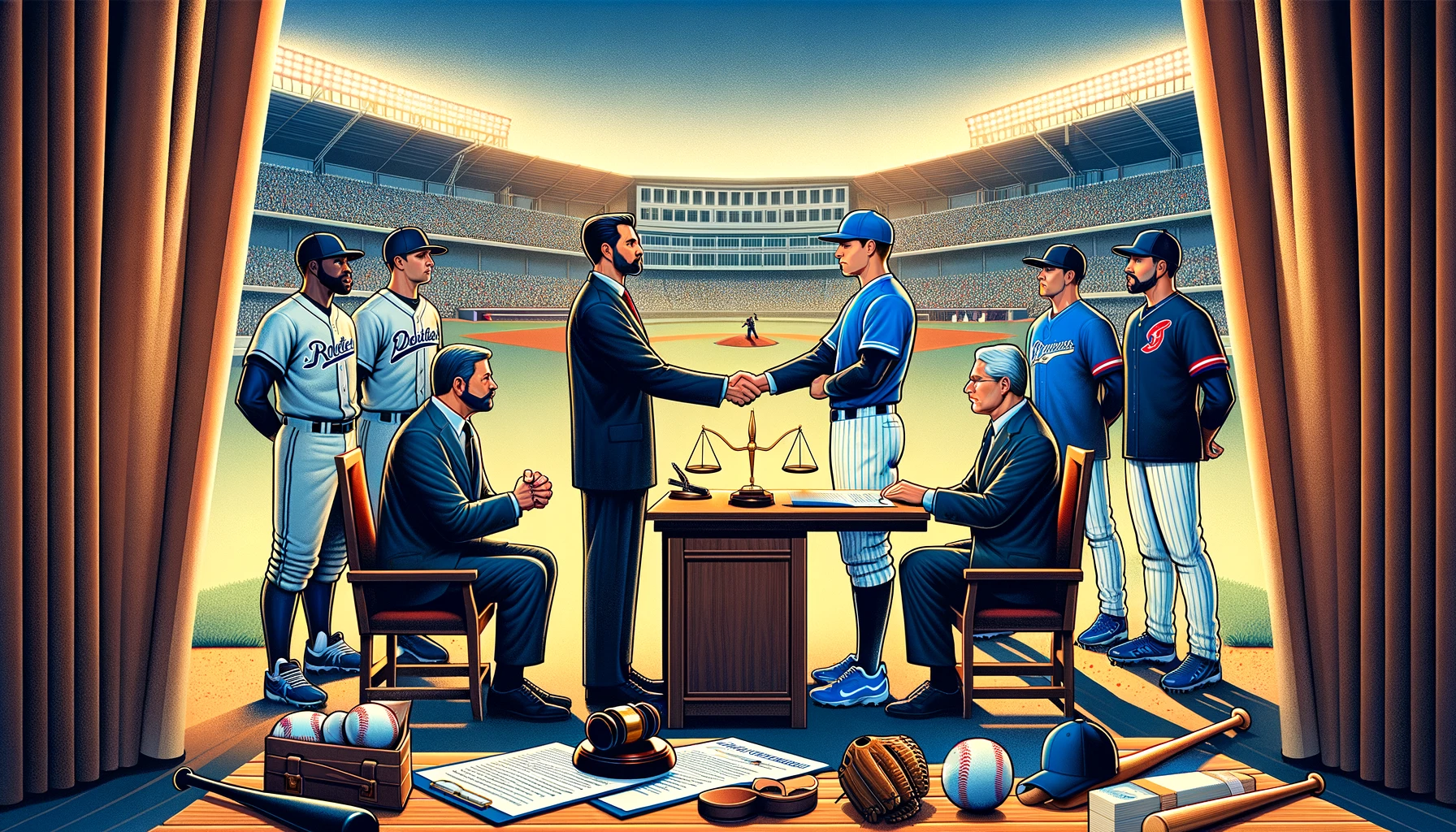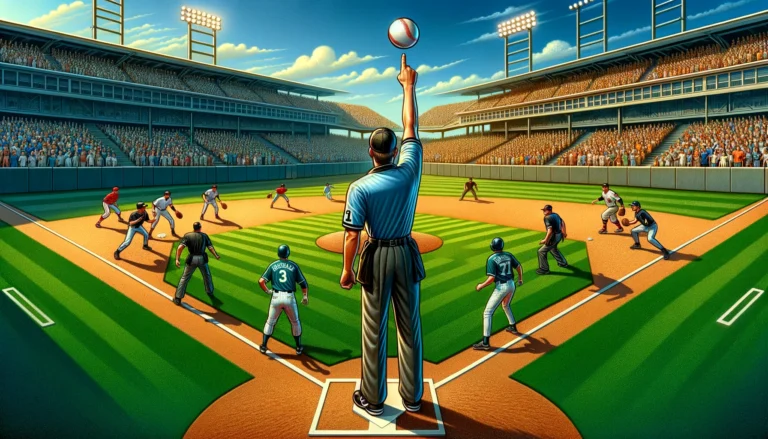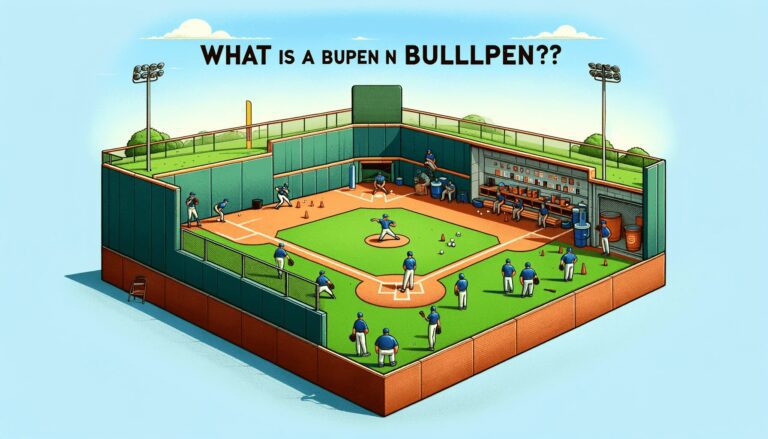What is Arbitration in Baseball?
What is Arbitration in Baseball? Arbitration in baseball is a process used to determine a player’s salary when the player and team cannot agree on a contract value.
When a player becomes eligible for arbitration, they file a salary figure they believe they deserve based on their performance. The team also files what they believe is a fair salary for that player. If the two sides cannot agree a salary number through negotiation, the case goes to an arbitration hearing.
An independent arbitrator hears arguments from both the player and the team about why their proposed salary is appropriate. The arbitrator must choose one salary or the other – they cannot pick a number in the middle. The hearing’s winner gets their proposed salary for that season’s contract.
Arbitration helps players earn higher salaries based on their contributions while giving teams cost control. The process avoids many salary disputes and benefits both players and teams.
Key Takeaways
- Baseball arbitration provides a structured approach for players and teams to settle contract negotiations, with clear benefits over ad hoc arbitration, such as experienced arbitrators and streamlined rules.
- The minor league system is a complex developmental network that prepares players for the majors, with various levels from Low-A to Triple-A, each serving a distinct purpose in player progression.
- Arbitration has significant financial implications for the sport, influencing player salaries, team budgets, and the overall economics of baseball.
- Skepticism around institutional arbitration stems from a lack of understanding and trust in the process, which can impact baseball’s reputation and stakeholders’ willingness to embrace it.
- The future of arbitration in baseball may see innovations and changes that could shape the sport’s expansion globally and its long-term sustainability.
Understanding Baseball Arbitration
The Basics of Arbitration in Baseball
At its core, baseball arbitration is a method for resolving salary disputes between Major League Baseball players and their teams.
When a player and team cannot agree on a salary figure for the upcoming season, they turn to arbitration to settle the difference.
Here’s a simplified breakdown of the process:
- Both the player and the team submit their proposed salary figures to an arbitration panel.
- Each side presents arguments and evidence to support their salary request, often including the player’s past performance, comparable salaries of peers, and the team’s financial situation.
- After hearing both sides, the arbitration panel selects either the player’s or the team’s figure as the player’s salary for the season.
This process ensures that players are paid fairly based on their contributions to the club or team while allowing teams to maintain financial balance.
However, the arbitration process can also be a source of tension, as it pits players against teams in a battle over value and worth. You may read the guide on What is a Walk-Off in Baseball
Comparing Ad Hoc and Institutional Arbitration
In the realm of baseball arbitration, two primary systems exist: ad hoc and institutional arbitration.
Ad hoc arbitration is a more informal process, where the parties involved have the flexibility to set their own rules and select their own arbitrators.
This can be advantageous for its adaptability to the specific needs of the parties, but it may lack the procedural rigor and support of more formal systems.
In contrast, institutional arbitration provides a structured framework with established rules and procedures.
Parties benefit from a panel of experienced arbitrators, an arbitration deadline, streamlined rules, and professional secretarial support.
This system is designed to ensure fairness and efficiency, often leading to a more predictable and reliable process.
Choosing between ad hoc and institutional arbitration involves weighing these differences. While ad hoc arbitration offers greater control to the parties, institutional arbitration brings the assurance of a tested and consistent approach.
The decision ultimately hinges on the parties’ priorities, whether they value flexibility or formality in resolving their disputes.
The Role of Arbitrators and Experts
In the realm of baseball arbitration, the arbitrators and experts play a pivotal role in determining the outcomes of disputes.
Arbitrators are the impartial decision-makers who weigh the arguments and evidence presented by both parties.
Their expertise and understanding of the sport’s legal and financial aspects are crucial for fair and informed decision-making.
Experts, often with specialized knowledge in baseball statistics, player performance, and contract norms, provide valuable insights that inform the arbitrators’ decisions.
They may present data and analysis that can sway the arbitration panel in favor of one side or the other.
The process typically involves:
- A thorough review of the player’s performance metrics and team contributions.
- Comparative analysis of salaries and contracts within the league.
- Consideration of the player’s potential for future performance and marketability.
Ultimately, the arbitrators and experts must strive to achieve a balance. They need to consider both the interests of the players and the financial strategies of the teams.
This ensures that the arbitration process maintains its integrity. It continues to be a trusted mechanism within baseball.
Read Also: What is a Balk in Baseball
The Minor League System Explained
The Structure of Minor League Baseball
Minor League Baseball (MiLB) serves as the developmental ground for future Major League Baseball (MLB) talent, operating as a tiered system of teams affiliated with MLB clubs.
At its core, MiLB is about nurturing players and preparing them for the big leagues.
The structure is hierarchical, starting with Rookie Ball/Short Season at the base, and ascending through various levels such as Low-A, High-A, Double-A, and ultimately Triple-A, which is just one step away from the majors.
Each level is designed to progressively challenge and develop players, with the ultimate goal of reaching MLB.
With over 240 teams nationwide, MiLB offers accessible live baseball experiences for fans, often at a more affordable price point than MLB games.
This extensive network ensures that many fans have the opportunity to watch up-and-coming talent in person.
The Journey from Low-A to Triple-A
The path from Low-A to Triple-A is a critical phase in a baseball player’s career, marking their progression through the minor leagues.
Low-A is the starting point for many young athletes, especially those fresh from high school, where they experience their first Spring Training and embark on a grueling 140-game season.
College players, particularly from prominent programs, may begin at High-A, a notch above Low-A in the hierarchy.
Moving up, Double-A baseball is a significant milestone, often considered the gateway to the ‘upper minors’. It’s a level where the talent pool is refined, and only those with true major league potential survive.
The competition intensifies, with pitchers displaying more advanced skills than those at Single-A, setting a high bar for players aiming for the big leagues.
At the pinnacle of the minor league system sits Triple-A, a diverse mix of rising stars and seasoned professionals.
Some players bypass Triple-A altogether, jumping from Double-A to the majors, while others with substantial major league experience use Triple-A to rehabilitate and refine their skills before returning to the top tier of baseball.
How Minor Leagues Prepare Players for the Majors
The journey through the minor leagues is a critical stage in a player’s development, providing a structured path to hone their skills and adapt to higher levels of competition.
At the base of the minor league hierarchy, we have Rookie ball, which introduces players to the professional environment.
As they progress, athletes encounter increasingly advanced competition, particularly at the Double-A level where pitchers and hitters are often on the cusp of breaking into the majors.
The final rung before the big leagues is Triple-A, a diverse mix of rising stars and seasoned veterans.
Some players may bypass this level, but for many, it’s the last proving ground before their major league debut.
Throughout these stages, players are part of a ‘farm system’. This system is a network of teams comparable players all under the control of a major league organization.
It is designed to cultivate talent and prepare them for the highest level of the sport.
Read Also: What is a Cycle in Baseball
The Economics of Arbitration in Baseball
Financial Implications for Players and Teams
The arbitration process in baseball serves as a critical mechanism for determining player salaries, particularly for those not yet arbitration eligible or for free agency.
Financial outcomes from arbitration hearings can significantly impact both players and teams, shaping their strategies and budgetary considerations for upcoming seasons.
- For players, arbitration can lead to substantial salary increases based on performance metrics and comparisons to peers.
- Teams must balance the desire to retain talent with the constraints of their payroll budgets, often leading to tough decisions about which players to go to arbitration with or to offer long-term contracts.
The financial stakes involved in arbitration are high, and the outcomes can set precedents for future negotiations, influencing the market value of players across the league.
It’s a delicate dance of numbers and negotiation skills, where the right presentation of a player’s worth can mean the difference between a modest raise and a career-defining payday.
Arbitration Eligibility and Salary Negotiations
Arbitration eligibility in baseball is a critical juncture in a player’s career. It marks the transition from a team-determined salary to one that can be influenced by the player’s performance and market value.
Players typically become arbitration eligible players up for arbitration after three years of Major League service. However, there are exceptions for ‘Super Two’ players.
These players rank in the top 22% in service time among those with between two and three years of major league service time.
The salary negotiation process is a structured affair, involving the following steps:
- The player and the team each submit their proposed salary figures.
- If an agreement is not reached, the case proceeds to an arbitration hearing.
- A panel of arbitrators reviews the submissions and renders a decision.
This process can be influenced by various factors, including the player’s statistics, the team’s payroll strategy, and comparable salaries for players with similar roles and achievements.
Notably, the outcome of these negotiations can set precedents for future arbitration cases, making each decision a significant event for the sport’s economic landscape.
Case Studies: Arbitration Successes and Failures
Arbitration in baseball has seen its share of landmark decisions that have shaped the sport’s economic landscape.
Success stories often highlight players who secured contracts well above their initial offers, reflecting the effectiveness of their arguments and the arbitrators’ recognition of their value.
On the flip side, teams have also emerged victorious, maintaining payroll flexibility by winning cases against high- salary arbitration demands.
- The process is not without controversy, as some argue that arbitration can lead to strained relationships between players and management.
- Critics point to the adversarial nature of the process, which can sometimes result in a ‘win-lose’ agreement, unlike mediation which often leads to more amicable outcomes.
Despite the mixed outcomes, arbitration remains a critical component of baseball’s economic system, providing a structured platform for salary disputes to be resolved.
The evolution of arbitration practices continues to be a topic of interest for all stakeholders involved.
Read Also: What is Slugging in Baseball
Conclusion
In exploring baseball arbitration, we’ve looked at both institutional and ad hoc types, learning about their roles within the sport.
Institutional arbitration offers a structured process with experienced arbitrators and clear rules. However, ad hoc arbitration is more common and familiar to many.
The challenge is to make institutional arbitration more accepted, ensuring its advantages are understood and trusted by all involved.
Similarly, the minor leagues are crucial for training players, somewhat like the arbitration process where experience builds over the years of service time together.
Just like players progress from Single-A to the majors, arbitration in baseball might also need a gradual change in how it’s viewed, combining new ideas with traditional practices.
The aim is to create a system that is fair, efficient, and respected, truly reflecting the spirit of America’s favorite pastime.







